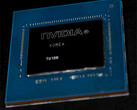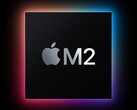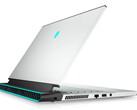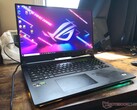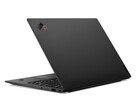I was fascinated by mobile computing from the day my father first brought home an Apple Powerbook 180 in 1992. Growing up, I would read computing magazines like MacWorld and PCWorld, fawning over the pictures of the latest computers and dreaming of one day being able to afford the latest and greatest tech that I imagined would revolutionise my life and bring me happiness.
That interest in computing (and, aside, the misconception that material goods would make me happy) held strong for a long time — until the last few years, that is, when I began to feel like there was less and less to be excited about with each release of technology. I have been using my Kaby Lake refresh XPS 13 9360 i5-8250U with 8 GB of RAM and an FHD display — bought on eBay for less than US$400 — for several years now, but it’s unfortunately no longer enough to keep up with my workflow.
But luckily for me, it’s 2023! Media corporations keep telling us that the world is getting better, and so it must also be a better time than ever to buy a new computer, right? Well, after spending several confusing and frustrating weeks researching potential replacements that fit my requirements, I don’t think 2023 is a great time to be PC shopping.
The requirements
- At least 6 hours of battery life — disqualifies just about every laptop with a QHD+/UHD display
- At least 16 GB of RAM — disqualifies most budget PCs
- Comfortable input (no capacitive keys, no missing keys, at least 1.2 mm travel, no jumpy trackpad, no sharp palm rest digging into the wrist)
- At least 300 nits display brightness — disqualifies many business laptops
- A 3.5 mm audio jack — no XPS 13 9320 or HP Dragonfly Pro
- No soldered SSD or other unethical business practices — sorry, Apple
- At least a 4-core, 8-thread CPU
- Thunderbolt 3, 4, or USB 4.0 to be compatible with my eGPU
- Under 4.5 lbs
- The cheaper, the better
Going in the wrong direction
The last four requirements weren’t too hard to satisfy, but as I spent more and more time researching the laptop landscape, I got the sense that many major OEMs have been going in the wrong direction: Many of the laptops I either tried or considered purchasing had screen/CPU/battery combinations such as an i7-12xxP chip with a 4K OLED screen and a ~55WHr battery, resulting in not nearly enough battery life to get a user through a day. The XPS 13 9320 no longer has a 3.5mm jack, and the XPS 13 Plus not only doesn’t have a 3.5 mm jack, but it also eschews the function keys — probably because it looked better in PR shots and tech influencer videos.
The 2023 Asus Zenbook S13 OLED is a similar story when it comes to a great laptop going in the wrong direction when compared to its predecessor. By focusing on thinness for the sake of marketing claims, the 2023 Zenbook S 13 is a definitive step backwards from the 2022 model in terms of keyboard, temperatures, and performance.
HP took their well-received Dragonfly, appended a “Pro” to its name, and removed the headphone jack.
How about the XPS 15? What has Dell brought to the celebrated product line over its many iterations for end users? The chart below might be illuminating:
| Dell XPS 15 9520 RTX 3050 Ti i7-12700H, GeForce RTX 3050 Ti Laptop GPU, 86 Wh | Dell XPS 15 9500 Core i7 4K UHD i7-10875H, GeForce GTX 1650 Ti Mobile, 86 Wh | Dell XPS 15 9530 RTX 4070 i7-13700H, GeForce RTX 4070 Laptop GPU, 86 Wh | Dell XPS 15 9510 11800H RTX 3050 Ti OLED i7-11800H, GeForce RTX 3050 Ti Laptop GPU, 86 Wh | Dell XPS 15 9500 Core i5 i5-10300H, UHD Graphics 630, 56 Wh | Dell XPS 15 7590 9980HK GTX 1650 i9-9980HK, GeForce GTX 1650 Mobile, 97 Wh | Dell XPS 15 7590 i5 iGPU FHD i5-9300H, UHD Graphics 630, 97 Wh | |
|---|---|---|---|---|---|---|---|
| Battery runtime | |||||||
| Reader / Idle (h) | 14.8 | 23 | 11.5 | 26.4 | 15.2 | ||
| WiFi v1.3 (h) | 8.8 | 9.1 | 8 | 7 | 9.3 | 7.8 | 14.1 |
| Load (h) | 3.2 | 2 | 1.5 | 1.8 | 1.6 | 3.3 | 1.7 |
| H.264 (h) | 10.4 | 17.6 |
Battery life has taken a hit with each succession of Intel CPUs
Battery life peaked with the XPS 15 9500, then got worse and worse. The XPS 15, which has long struggled with thermals, has had more and more power-hungry CPUs and GPUs crammed into it. Specs sell more than usability, apparently. As YouTube laptop reviewer JustJosh has pointed out, buying a laptop in 2023 just kind of sucks, as it seems like manufacturers are making laptops for resellers like BestBuy rather than actual users, shoving CPUs and GPUs that attract the highest price premiums into laptops that can’t make use of them.
It’s not just battery life that has taken a step back in recent years, though: Two years after release, Windows 11 still boasts fewer features, higher system requirements, and worse performance than Windows 10. There was the crypto crunch, which companies took as much advantage of as they could (remember Nvidia lying about how many GPUs it was selling to miners?), game publishers charging more for less as they cut content for DLC and added pay-to-win microtransactions, the corporate push for NFTs, the rise of subscription services for things you used to be able to own outright, Apple and other corporate entities’ anti-repair push and the trend of eliminating user upgrades…I could go on.
Paradigm shifts
Thinking back on my last few years of computing, there have only been a few events that changed the way I personally worked and played:
- In 2015, Nvidia launched its 10-series (Pascal) GPUs, which finally brought the mobile market close to the desktop market in terms of performance, allowing me to have very enjoyable gaming experiences on the go.
- Also in 2015, Thunderbolt 3 brought eGPU support to the mainstream, allowing me to switch to an ultrabook + eGPU combination for my home.
- In 2017, Intel launched its 8th-generation (Coffee Lake) CPUs, which gave us 4-core, 8-thread CPUs in a 15 W TDP and 6-core, 12-thread CPUs in a 45 W TDP, which greatly increased the amount of power I was able to bring with me, improving both gaming and audio processing.
Those were the things that personally affected me, and, to be fair, there are also other areas where it is a better time than ever:
- Nvidia’s 40-series GPUs bring impressive gains in performance-per-watt.
- AMD has finally stepped back into the arena as a serious competitor (though it’s hard to find their CPUs on premium laptops that could benefit from their efficiency, such as Dell’s XPS series).
- Prices have dropped on used laptops, and laptops such as the XPS 15 7590 are still excellent and can be bought for cheaper than ever.
- Display technologies, such as miniLED, OLED, and high refresh rate have improved the user experience.
- Companies like Framework are showing that consumer-friendly laptops are attractive in the market.
- Linux is better than ever, thanks to Valve’s Steamdeck and their Proton compatibility layer for gaming.
- Apple is now making some of the best laptops around since 2015 with the company's M1/M2 silicon (if you don’t care much about consumer rights and the environment, that is!).
Conclusion
So, I guess it’s not all bad, but still — I get the feeling that many OEMs are either deliberately not trying, or they are being led in the wrong direction by poor management. We came so close to laptop perfection by 2015, and yet the industry has been seemingly chasing their collective tails since then.
Despite Apple reversing course after its disastrous 2016 MacBook redesigns that removed the function keys, all ports except USB Type-C, and turned one of the best keyboards ever (the MBP Retina 2015 was near perfection) into a broken nightmare of a gimmick, certain PC manufacturers are pushing this direction of devolution for reasons that I can only associate with acute blunt-force cranial trauma. Is it any wonder that, global recession/depression aside, computer sales have tanked?
Is it really that hard to make a laptop with a bright screen, comfortable and accurate keyboard and trackpad, and enough battery life to get through a day? Or is it just not profitable enough for the shareholders when consumers are happy enough that they don’t upgrade? Maybe if we vote with our wallets and keep buying used laptops, they’ll start to listen.
Buy an Apple Mac mini desktop computer with M2 chip on Amazon
Source(s)
Own
Teaser image (edited): Kenny Eliason on Unsplash & Desola Lanre-Ologun on Unsplash
Content images: Elisa Ventur on Unsplash & Windows on Unsplash





